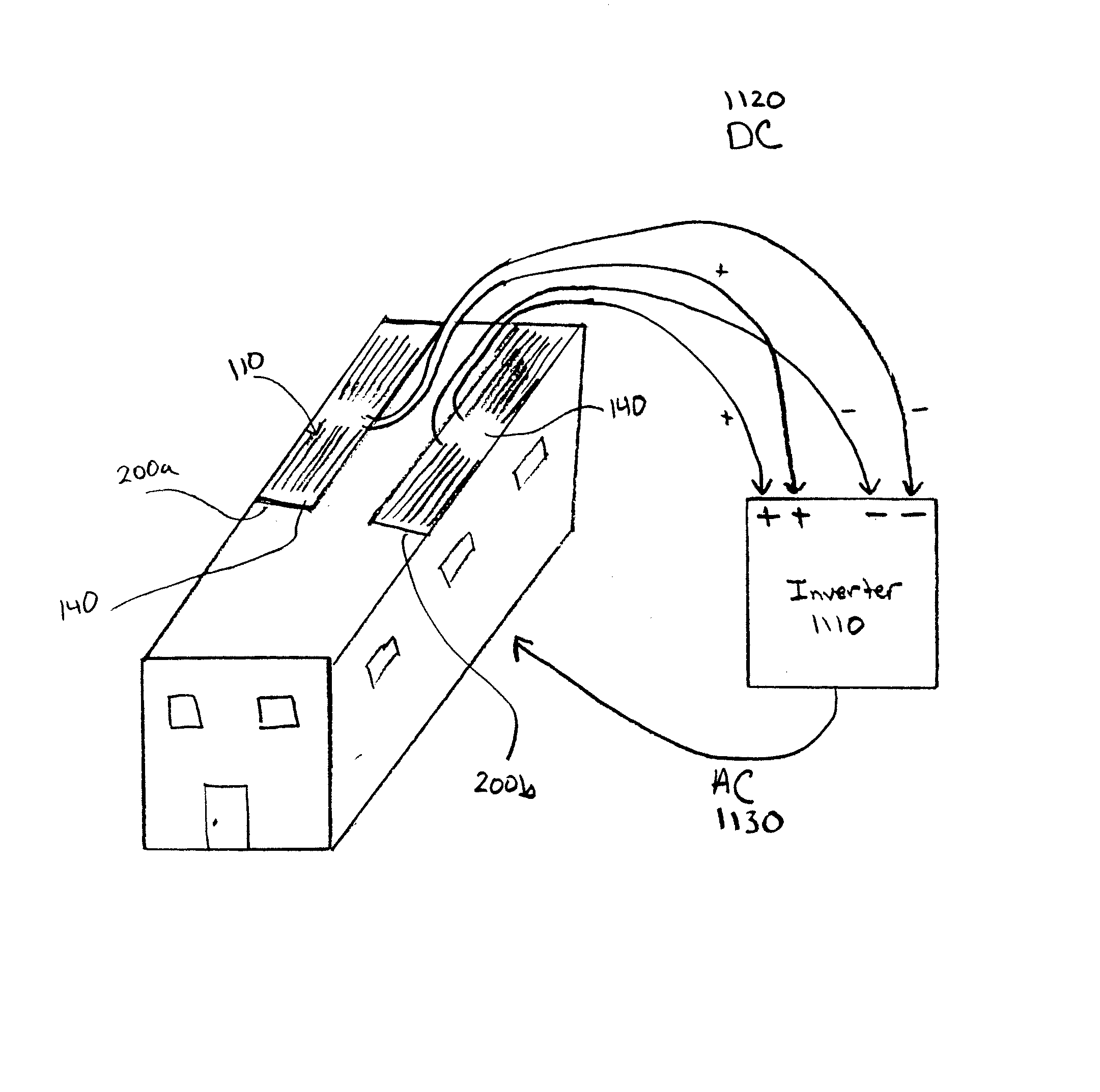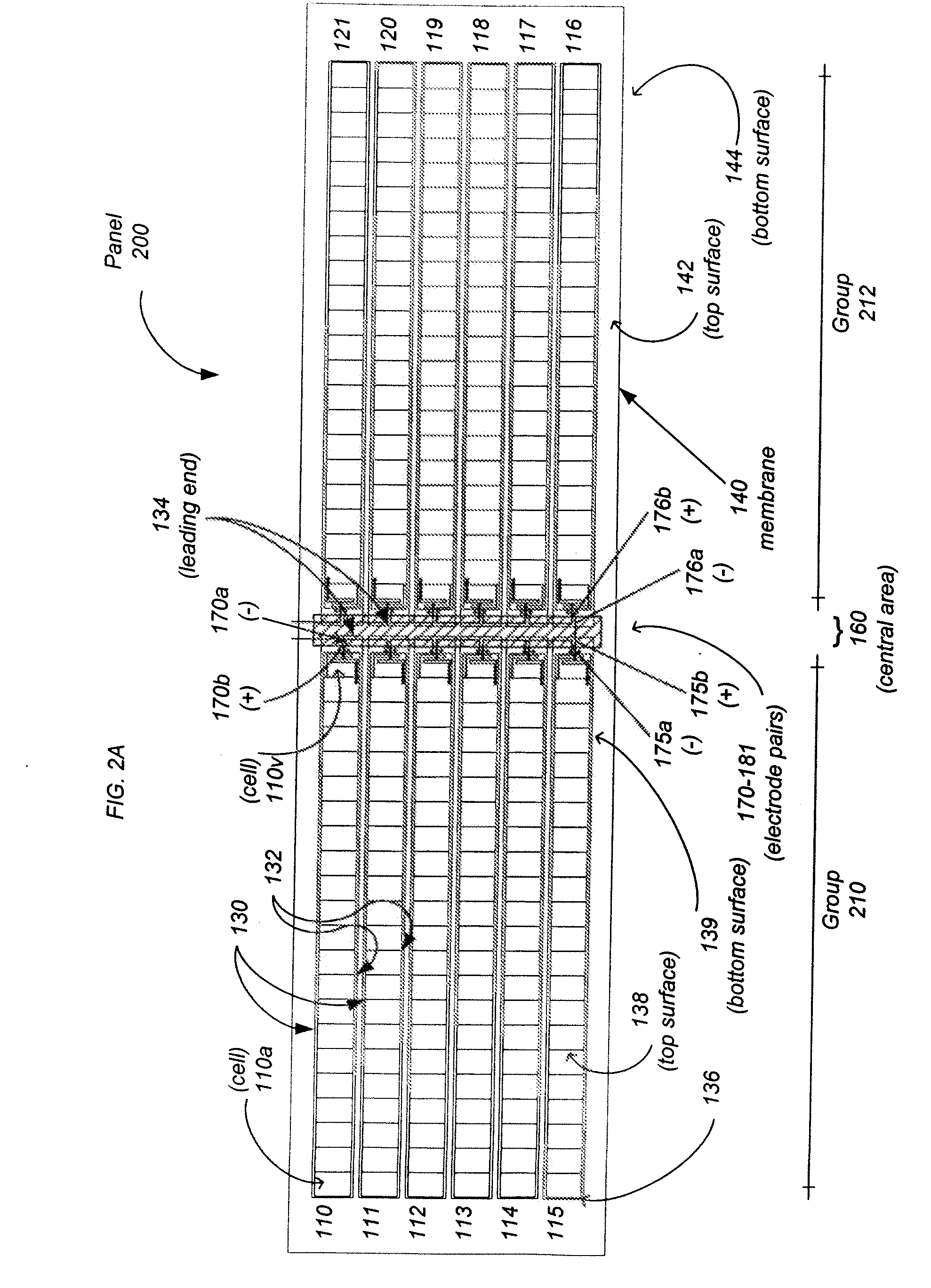Integrated photovoltaic roofing component and panel
a photovoltaic roof and integrated technology, applied in the field of roof components, panels and systems, can solve the problems of increasing the cost of installation, maintenance and cost, heavy “add-on” solar panels, and limiting their use to these protective functions, so as to reduce the electrical interconnection
- Summary
- Abstract
- Description
- Claims
- Application Information
AI Technical Summary
Benefits of technology
Problems solved by technology
Method used
Image
Examples
Embodiment Construction
[0027]The present invention provides a combination roofing component and panel. The component and panel include a plurality of solar or photovoltaic modules (“PV modules”) attached to a flexible membrane sheet, such as a single-ply membrane. The modules are arranged adjacent each other, e.g., side-by-side or end-to-end. The ends of the modules have electrical connectors or electrodes that are arranged to face each other or are adjacent or aligned with each other. The electrical connectors extend from internal module electrodes of the solar modules and can extend through apertures formed in a bottom surface of the flexible membrane. The electrical connectors conduct direct current (DC) electricity that may be connected directly to DC electrical devices or connected to an inverter that provides alternating current (AC) electricity to residential, commercial or industrial building structures. Additionally, the AC electricity can also be reverse metered into a utility grid. The ends and...
PUM
| Property | Measurement | Unit |
|---|---|---|
| length | aaaaa | aaaaa |
| length | aaaaa | aaaaa |
| length | aaaaa | aaaaa |
Abstract
Description
Claims
Application Information
 Login to View More
Login to View More - R&D
- Intellectual Property
- Life Sciences
- Materials
- Tech Scout
- Unparalleled Data Quality
- Higher Quality Content
- 60% Fewer Hallucinations
Browse by: Latest US Patents, China's latest patents, Technical Efficacy Thesaurus, Application Domain, Technology Topic, Popular Technical Reports.
© 2025 PatSnap. All rights reserved.Legal|Privacy policy|Modern Slavery Act Transparency Statement|Sitemap|About US| Contact US: help@patsnap.com



